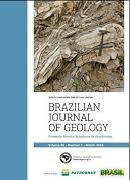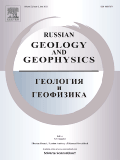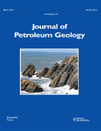
Moscow University Geology Bulletin
Scope & Guideline
Advancing Geoscientific Knowledge for a Sustainable Future
Introduction
Aims and Scopes
- Sedimentology and Stratigraphy:
The journal frequently publishes studies on sedimentary processes, stratigraphic analysis, and depositional environments, focusing on various geological periods and regions. - Geochemistry and Mineralogy:
Research related to the chemical composition of geological materials, including mineralogical studies, geochemical assessments of sediments and waters, and the exploration of mineral resources, is a core focus. - Paleontology and Paleoclimatology:
The journal includes works on paleontological findings, evolutionary studies, and paleoclimatic reconstructions, contributing to the understanding of historical ecological changes. - Geophysics and Geodynamics:
The exploration of geophysical methods, tectonic processes, and geodynamic modeling features prominently, with studies often utilizing advanced techniques such as seismic data analysis. - Environmental Geology:
Research that addresses the interaction between geological processes and environmental issues, including pollution studies, groundwater management, and the impact of human activities on geological formations. - Petroleum Geology:
Significant coverage is given to studies of oil and gas reservoirs, including depositional environments, reservoir characteristics, and exploration methodologies.
Trending and Emerging
- Climate Change and Environmental Impact:
There is an increasing focus on the geological implications of climate change, including studies on permafrost thawing, groundwater fluctuations, and the geochemical effects of human activities. - Advanced Geophysical Techniques:
The use of advanced geophysical methods, such as magnetotelluric soundings and seismic data modeling, is on the rise, reflecting technological advancements and their application in exploring geological formations. - Interdisciplinary Research:
Emerging themes showcase interdisciplinary approaches that integrate geology with other fields, such as biology, chemistry, and environmental science, particularly in studies related to paleoclimatology and geochemistry. - Resource Sustainability:
Research on sustainable practices in resource extraction, including oil, gas, and mineral resources, is becoming increasingly relevant, addressing the balance between resource utilization and environmental preservation.
Declining or Waning
- Volcanology:
Research specifically focused on volcanic processes and products has decreased, potentially due to a shift in interest towards applied geological studies or other areas of geosciences. - Historical Geology:
Studies centered on historical geological events and formations, while still present, are less frequent, indicating a possible trend towards more contemporary geological issues. - Geological Engineering Applications:
The application of geological principles to engineering problems has seen a reduction, possibly due to an increased focus on environmental geology and resource management.
Similar Journals

Brazilian Journal of Geology
Pioneering Interdisciplinary Geoscientific InquiryBrazilian Journal of Geology, the flagship publication of the SOC BRASILEIRA GEOLOGIA, has been a beacon of geoscientific research since its inception in 2013. With an ISSN of 2317-4889 and an E-ISSN of 2317-4692, this open-access journal has facilitated the dissemination of high-quality research across various branches of geosciences, making it freely accessible to a global audience since 2014. Hailing from Brazil, the journal proudly holds a Q2 ranking in Earth and Planetary Sciences as of 2023, and ranks #73 out of 195 in Scopus, indicating its growing impact and relevance in the field. The Brazilian Journal of Geology aims to bridge diverse geological studies with interdisciplinary approaches, promoting the understanding and application of geology in addressing contemporary scientific challenges. As it converges research from 2013 to 2024, the journal not only enriches the academic landscape but also serves as a vital resource for researchers, professionals, and students eager to explore the complexities of the Earth and its processes.

Russian Geology and Geophysics
Unveiling Earth's Secrets, One Study at a TimeRussian Geology and Geophysics is a seminal journal published by GEOSCIENCEWORLD that plays a pivotal role in the dissemination of vital research within the realms of Earth-Surface Processes, Geology, and Geophysics. With an ISSN of 1068-7971 and an E-ISSN of 1878-030X, this journal has witnessed a continuous evolution since its convergence in 2007 and is poised to thrive through 2024. While it is not an Open Access journal, it is recognized for its significant contributions to the academic community, holding a respectable Q2 ranking in Earth-Surface Processes and Q3 rankings in both Geology and Geophysics as of 2023. The journal’s impact factors align it within competitive quartiles, marking it as an essential resource for researchers and professionals seeking to stay at the forefront of geological and geophysical sciences. By publishing high-quality peer-reviewed articles, the journal fosters an environment of knowledge sharing and innovation, making it indispensable for students, practitioners, and scholars alike who are dedicated to advancing our understanding of Earth's complex systems.

Journal of Geosciences
Pioneering Discoveries in Earth and Planetary SciencesJournal of Geosciences is a distinguished peer-reviewed journal published by CESKA GEOLOGICKA SPOLECNOST, based in the Czech Republic, that serves as a vital platform for the dissemination of innovative research in the field of Earth and Planetary Sciences. With an ISSN of 1802-6222 and E-ISSN of 1803-1943, this journal has established its significance within the academic community, evidenced by its Q3 ranking in both Earth and Planetary Sciences and Geology. The journal covers a broad array of topics, making it an essential resource for researchers, professionals, and students interested in geoscientific advancements and discoveries. The Journal of Geosciences reflects a commitment to high-quality scholarship, embracing a variety of methodologies and interdisciplinary approaches, and provides open access to its content, thereby encouraging global collaboration and knowledge sharing among geoscientists. With a publication history converging from 2007 to 2024, it continues to be a prominent venue for critical conversations and developments in the ever-evolving field of geosciences.

INTERNATIONAL JOURNAL OF EARTH SCIENCES
Exploring the Depths of Earth and BeyondINTERNATIONAL JOURNAL OF EARTH SCIENCES, published by Springer, is a leading journal in the field of Earth and Planetary Sciences, distinguished by its Q1 quartile ranking in the 2023 category of Earth and Planetary Sciences (miscellaneous). With an ISSN of 1437-3254 and an E-ISSN of 1437-3262, this journal has been a pivotal platform for researchers, academics, and practitioners since its inception in 1996. The journal's focus encompasses a broad range of topics within Earth sciences, making it a vital resource for contributions that enhance our understanding of geological processes, climate change, and planetary dynamics. The impact factor reflects its high standards and the significance of the research it publishes, ranking it in the 74th percentile among its peers as per Scopus. Furthermore, the journal offers Open Access options, facilitating the global dissemination of groundbreaking research. The editorial team is committed to advancing knowledge in Earth sciences, serving as an essential reference for students and professionals looking to engage deeply with this dynamic field.

China Geology
Elevating Geology Research to New HeightsChina Geology, published by KEAI PUBLISHING LTD, is a leading open-access journal that serves as a pivotal platform for disseminating high-quality research across a wide spectrum of Earth sciences. Since its inception in 2018, the journal has rapidly established itself with an impressive Q1 ranking in multiple critical categories, including Geology, Economic Geology, and Oceanography, among others, reflecting its significant contribution to the academic community. Positioned as a top-tier journal in the Earth Planetary Sciences domain, it ranks #22 out of 321 in Geology and exhibits an admirable impact in sub-fields such as Earth-Surface Processes and Geochemistry and Petrology. China Geology is committed to promoting rigorous scientific inquiry and facilitating the open exchange of knowledge in the geosciences, making it an essential resource for researchers, professionals, and students eager to explore innovative developments and fundamental advances in geology. The journal’s accessibility ensures that critical findings reach a broad audience, thereby enhancing collaboration and driving forward scientific discourse in the global community.

Geosfernye Issledovaniya-Geosphere Research
Empowering Early-Career Scholars in GeosciencesGeosfernye Issledovaniya-Geosphere Research, published by TOMSK STATE UNIVERSITY, is a significant addition to the scholarly discourse within the fields of Earth and Planetary Sciences, Ecology, and Geography. With a focus on innovative research and insights that span a broad spectrum of environmental and geographical studies, this journal aims to provide a platform for researchers and students alike to disseminate their findings and discuss pressing issues facing our planet. Though classified in the Q4 quartile for its 2023 metrics, it serves as an important venue for early-career scientists and scholars from the Russian Federation and beyond to contribute to the global dialogue surrounding geosciences. The journal operates with various access options, making it accessible to a diverse audience. It encourages submissions that inspire robust discussion and exploration of topics vital to our understanding of the geosphere and its intricate dynamics. Covering the pivotal years from 2019 to 2024, Geosfernye Issledovaniya-Geosphere Research is poised to enhance its relevancy and impact within the academic community.

BULLETIN OF GEOSCIENCES
Advancing Earth Sciences through Innovative ResearchBULLETIN OF GEOSCIENCES, published by the prestigious Czech Geological Survey, stands as a pivotal resource in the fields of Earth and Planetary Sciences and Environmental Science. Since its inception in 2003, the journal has been committed to advancing knowledge through high-quality research, currently holding a commendable Q2 ranking in both disciplines. With its focus on diverse and innovative topics, BULLETIN OF GEOSCIENCES provides an essential platform for researchers, professionals, and students aiming to disseminate and access impactful studies. The journal is indexed in Scopus, ranking #78/195 in General Earth and Planetary Sciences and #110/233 in General Environmental Science, reflecting its significant contribution to academia. Publishing from Prague, Czech Republic, this journal invites contributions that illuminate the interactions between geological processes and environmental phenomena, ensuring an inclusive and accessible approach to crucial global issues.

EARTH SCIENCES HISTORY
Fostering Scholarly Dialogue in Earth Sciences EvolutionEARTH SCIENCES HISTORY is a pivotal academic journal dedicated to the interdisciplinary exploration of the historical and philosophical dimensions of earth sciences. Published by the HISTORY EARTH SCIENCES SOC in the United States, the journal aims to promote scholarly discourse and disseminate research that contributes to our understanding of the evolution of earth sciences from various historical perspectives. With its ISSN 0736-623X and E-ISSN 1944-6187, the journal welcomes contributions that reflect upon the changing paradigms within geology, paleontology, and related fields. Although it currently holds a Q4 ranking in both Earth and Planetary Sciences as well as History and Philosophy of Science categories, it seeks to elevate its impact through rigorous peer-reviewed research, providing a platform for researchers, professionals, and students alike. While access to its content is not open, the insights shared within its pages are invaluable for anyone engaged in the advancement of knowledge in earth sciences history, making it an essential resource for the academic community.

JOURNAL OF PETROLEUM GEOLOGY
Bridging Academia and Applied GeologyJOURNAL OF PETROLEUM GEOLOGY, published by WILEY, is a prestigious peer-reviewed journal that serves as a vital platform for advancing knowledge in the fields of Earth and Planetary Sciences, Energy Engineering, and Geology. Established in 1978, this journal has cultivated a significant impact, reflected in its 2023 Q2 category rankings across multiple disciplines including Fuel Technology and Geology. Notably, it holds a commendable position in Scopus rankings, marking its importance with a 68th percentile in Earth and Planetary Sciences - Geology. While the journal operates under a traditional subscription model, its extensive repository of research articles facilitates crucial discussions and innovations among researchers, professionals, and students alike. The JOURNAL OF PETROLEUM GEOLOGY is pivotal for those seeking to explore and contribute to the evolving landscape of petroleum geology, offering insights that are essential for both academic and applied science domains.

STRATIGRAPHY AND GEOLOGICAL CORRELATION
Advancing Geological Insights Through StratigraphySTRATIGRAPHY AND GEOLOGICAL CORRELATION is a prominent scholarly journal published by PLEIADES PUBLISHING INC, featuring a dedicated focus on the fields of geology, stratigraphy, and paleontology. With ISSN 0869-5938 and E-ISSN 1555-6263, this journal has been disseminating significant research findings since its inception in 1994, continuously contributing to the academic discourse through 2024. Despite not currently offering open access, its relevance is underscored by its Category Quartiles for 2023, where it has established itself as Q3 in Geology and Paleontology, and Q2 in Stratigraphy. STRATIGRAPHY AND GEOLOGICAL CORRELATION ranks #29 out of 55 in Stratigraphy and #186 out of 321 in Geology according to Scopus metrics, positioning it within the competitive landscape of Earth and Planetary Sciences. Researchers, professionals, and students are invited to engage with the journal’s content to deepen their understanding and foster innovation within these critical areas of study.